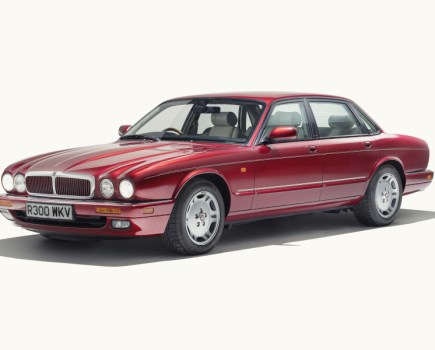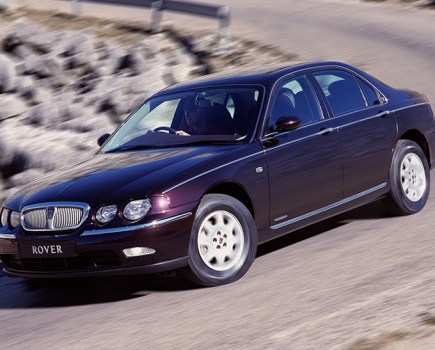The Matra-Simca Bagheera is a rare sports car with a fascinating backstory and unique three-abreast seat layout. Here’s the lowdown
Words and images: Mike Taylor
In the UK we tend to associate the Matra name with motor racing, but the reach of this innovative French business went far beyond motorsport. In fact the work of Mecanique Aviation Traction – or Matra for short – covered a wide range of activities including aeronautics and military weaponry, with the business being linked to companies such as BAE, Marconi, Nortel and Daimler/Chrysler.
Matra was formed in 1945 by Marcel Chassagny to develop a fast twin-engined plane, and a Matra-built engine was used in the first aircraft to break the sound barrier in horizontal flight in Europe in 1951. In 1957 Sylvain Floirat injected much needed finance, allowing the company to diversify its manufacturing base.
Matra also became involved with motor racing, securing successes in several F2 championships during the 1960s, before moving into F1 and becoming the victors in the 1969 championship with Jackie Stewart at the wheel. Matra then turned to sports cars, winning at Le Mans in 1972, 1973 and 1974, as well as the Manufacturers Sports Car Championship in 1973 and 1974.
Meanwhile, in the early 1960s Matra had become involved with Automobiles René Bonnet, manufacturers of low volume sports cars featuring GRP bodies and tuned Renault engines, after René Bonnet split from Charles Deutsch and the Deutsch Bonnet business in 1961. Matra’s GRP facility based in Romorantin just south of Paris produced missile bodies, with its spare capacity filled by manufacturing the bodies for the iconic Bonnet Djet sports coupé.
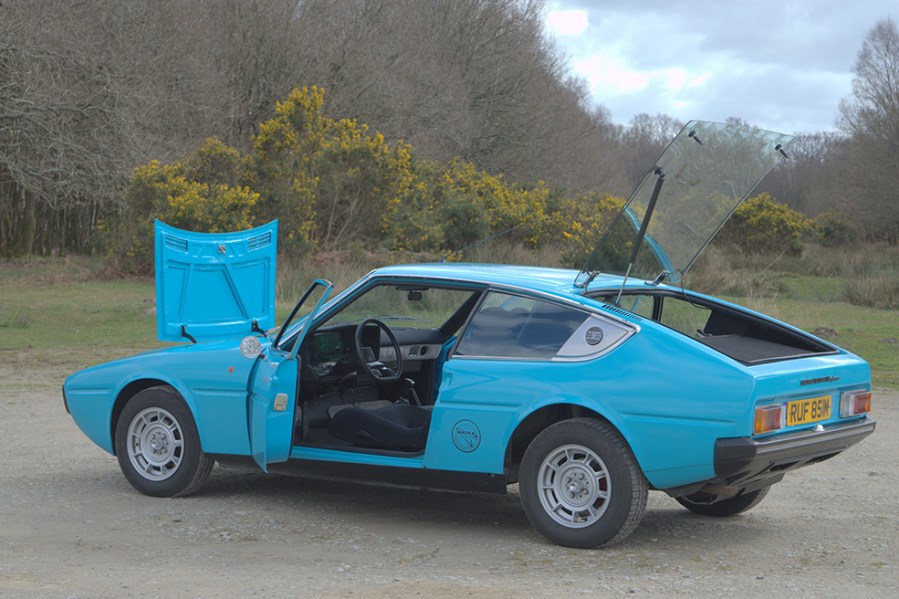
Matra’s association with Bonnet matured in 1964 when Matra CEO Jean-Luc Lagardere acquired the rights to the brand, which became the Matra Automobile Division of the parent company. Matra brought in Phillipe Guedon, an ex-Simca engineer, to improve the design of the Djet, turning the almost hand-built vehicle into a car more suitable for semi-mass production.
Next came the Matra 530, designed by Jacques Nocher of Simca France but working as a freelancer, with the drivetrain coming curiously enough from the Ford Taunus 15M TS. However, Matra had no network for servicing or repairing cars, so in December 1969 a deal was struck between Matra and Chrysler France encompassing both road and racing activities.
However, the 530’s Ford powertrain led to problems only solved when it was replaced with an all new sporting coupé aimed at the ‘youth market’ and the likes of the MGB GT. That featured a sleekly styled body with Chrysler mechanicals from the French Simca range, and was called Matra-Simca Bagheera after the panther in The Jungle Book by Rudyard Kipling.
The René Bonnet team had given the Matra engineers considerable experience in dealing with steel and GRP, and the basis for the Matra-Simca Bagheera was a torsionally rigid welded steel structure to form a robust full height cage with bulkheads fore and aft, capable of absorbing the stresses normally incurred by the bodyshell. To this framework were affixed the various fibreglass body panels, so it was possible to drive the chassis without the body panels attached.

Evidence of Matra’s automobile and aeronautical expertise was the car’s slippery shape, a claimed drag coefficient of just 0.33 Cd being incredible for the day. Underneath was torsion bar suspension, while the brakes were servo assisted discs all round giving the car good handling and roadholding.
The power unit was the 1100 Simca ‘Special’ engine, fitted with two twin-choke carburettors that helped it to achieve 84bhp. Significantly, rather than change the gearbox final drive ratio, Matra opted to fit 185 section tyres to the rear wheels, thereby increasing the mph/1000rpm by some 10% while also increasing understeer on hard cornering.
In all other respects the Matra-Simca Bagheera’s drivetrain was identical to the Simca 1100 Ti. In true mid-engine layout tradition the power unit was located just behind the seats in a sealed noise reducing compartment. Access was through a small hatch let into the rear parcel shelf, making even regular maintenance such as changing plugs and points a fiddly business.
Inside, the Matra-Simca Bagheera exuded a strong sense of high end luxury, which put it above Triumph and MG models and more akin to Lotus and Lancia. Naturally, attention was drawn to the unusual three-abreast seating configuration, tall sculptured contours in the upholstery being designed to accommodate each person comfortably.
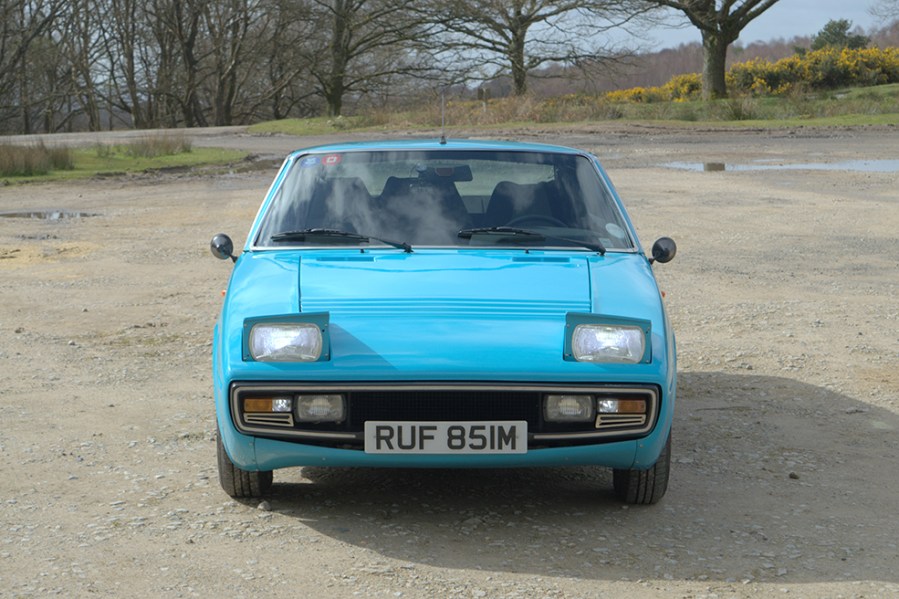
Another component of the interior design which added to the feeling of spaciousness was the lack of a transmission tunnel, while the front inner wheelarches hardly protruded into the cabin – passengers were given a novel toe board on which to rest their feet. Ahead of the driver was a binnacle totally unique to the car with the usual array of instruments, while a final touch of class was the elegant fluted headlining.
For a mid-engined car, accommodation for bags and packages was reasonably generous in the Matra-Simca Bagheera. Under the front bonnet (which housed the battery, heater blower motor, washer bottle and angled spare wheel) there was space for a squashy bag or oddments. The main rear stowage compartment, which stretched the full width of the car, was generous for the configuration.
The Matra-Simca Bagheera was introduced to the motoring press in April 1973, and to the public at the Le Mans 24-hours that year. It was available in just three liveries: yellow, orange or blue, with the first batch being all yellow. However, it was soon felt that the retail price was too high and a low specification model was introduced. Then came the Type 2 with alloy wheels, and a radio and sunroof as options.
Two years later the S version of the Matra-Simca Bagheera arrived powered by the 1442cc Alpine/Horizon engine and with the benefit of electric windows and a larger engine access hatch. The green instrument panel was replaced by an orange version and check cloth trim, while S badges were added to the rear wings. A special Courreges (couturier) model was available with luxurious white leather-look interior to complement the silk finish white paintwork.

In 1976 the Matra-Simca Bagheera Series 2 models appeared including Base, S and Courreges versions. The bodywork had been redesigned with wraparound bumpers, modified side rear windows and new light clusters at the back. In 1977 it seems that Chrysler UK were persuaded by dealers to import LHD Bagheeras into the UK; the Matra Enthusiasts Club has records that 65 (around half of those brought into the UK) were converted into RHD, the work being carried out as part of a customer’s order.
This turned an already costly import into an expensive £6000 car, and Chrysler wanted nothing to do with it – observers suggest these conversions were not well implemented. The following year the Courreges model was replaced by the Matra-Simca Bagheera X, which was available in either Silver with grey interior or Black with bright green trim.
In 1979 the car was re-badged as the Talbot-Matra Bagheera in recognition of the takeover of Chrysler Europe by Peugeot Citroën (PSA) in late 1978 and was the subject of major changes, which included a revised dashboard (which was later carried over into the replacement Murena) with repositioned switches, heater controls, a horizontally mounted radio, and three lap and diagonal seat belts. The Base model now had a detuned 1442cc single carb engine and a lower final drive ratio.
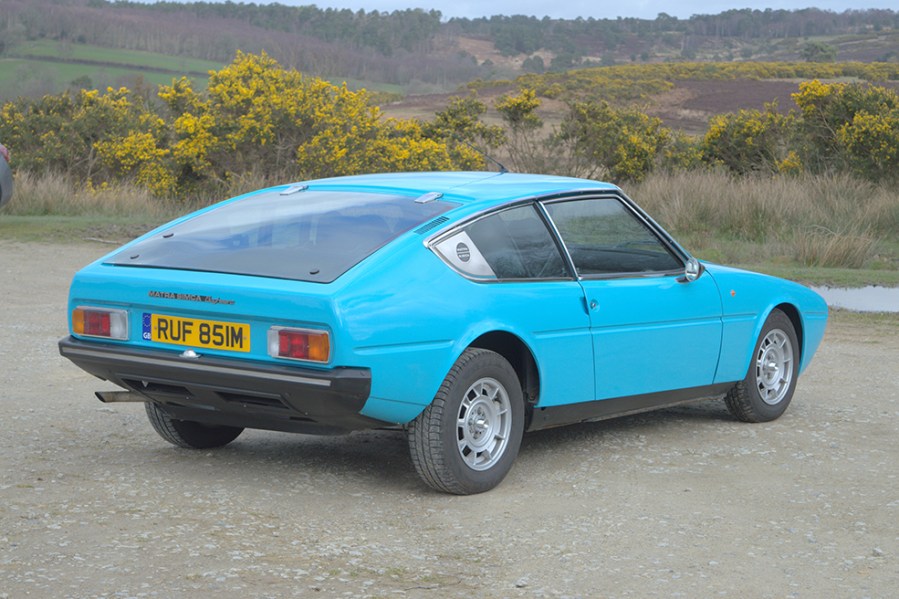
That year also saw the introduction of a limited edition Jubilee version to commemorate the Simca’s Horizon’s Car of the Year award. This was finished in silver and fitted with the S tuned engine and the same trim level as the X version. All models received restyled seats. In 1980, the final production year, only the Base and X models survived, now with electronic ignition and new door handles with lift up buttons while the X model got colour coded bumpers.
Bagheera production ceased in April to make way for the all new Murena, another three seater coupé from Romorantin, which had clearly been on the drawing board ready to make its debut before the PSA takeover. It featured a galvanised steel chassis to overcome the Bagheera’s reputation for rot.
Interestingly, to complement the Bagheera’s impressive handling, in 1975-76 the Matra/Simca team created a unique power unit combining two 1.3-litre four-cylinder engines using a common sump, the two crankshafts connected by a chain drive. The innovative U8 engine produced 168bhp and was fitted into a prototype, which had the flared rear arches introduced on the Series 2 Bagheera. Sadly, harmonic vibration problems and the critical financial state of Chrysler France were the primary reasons for cancelling the programme.
























